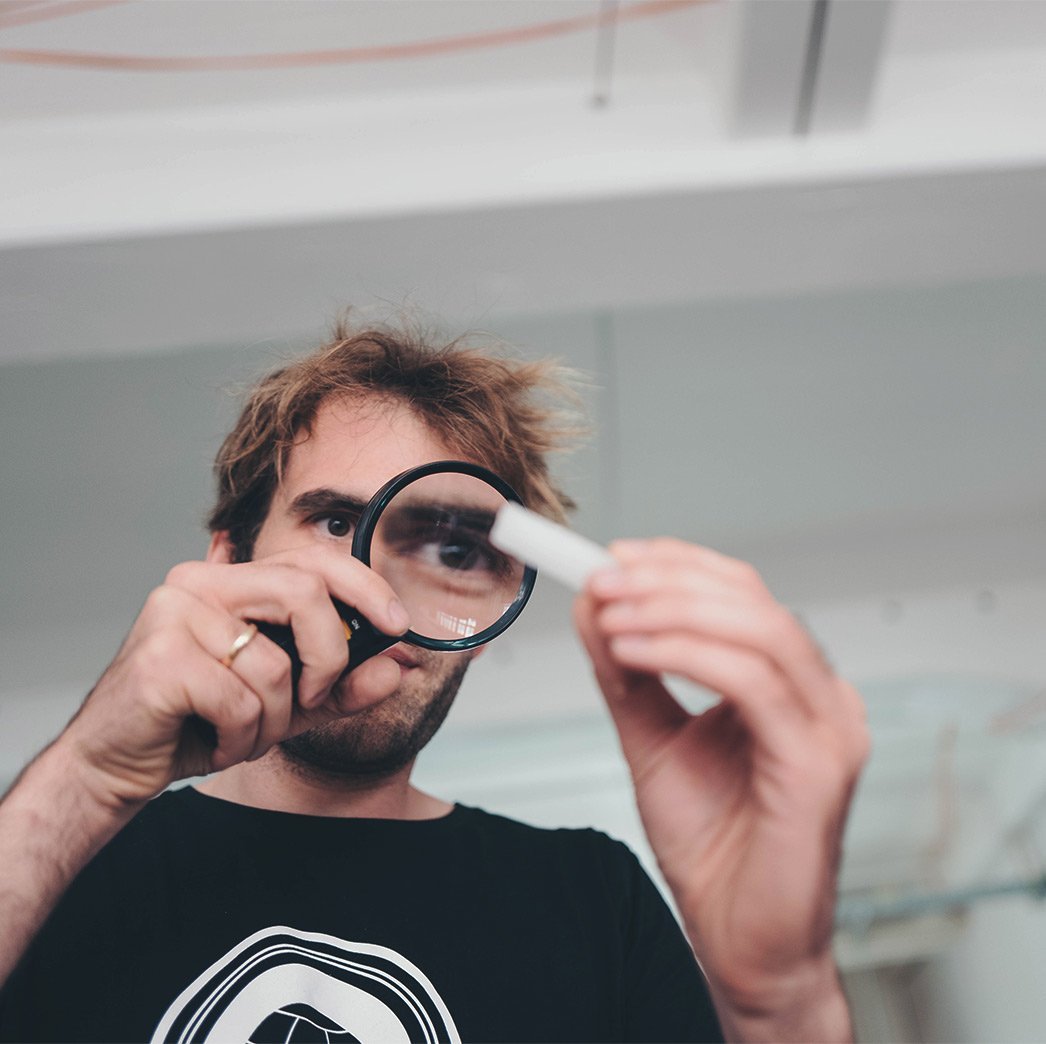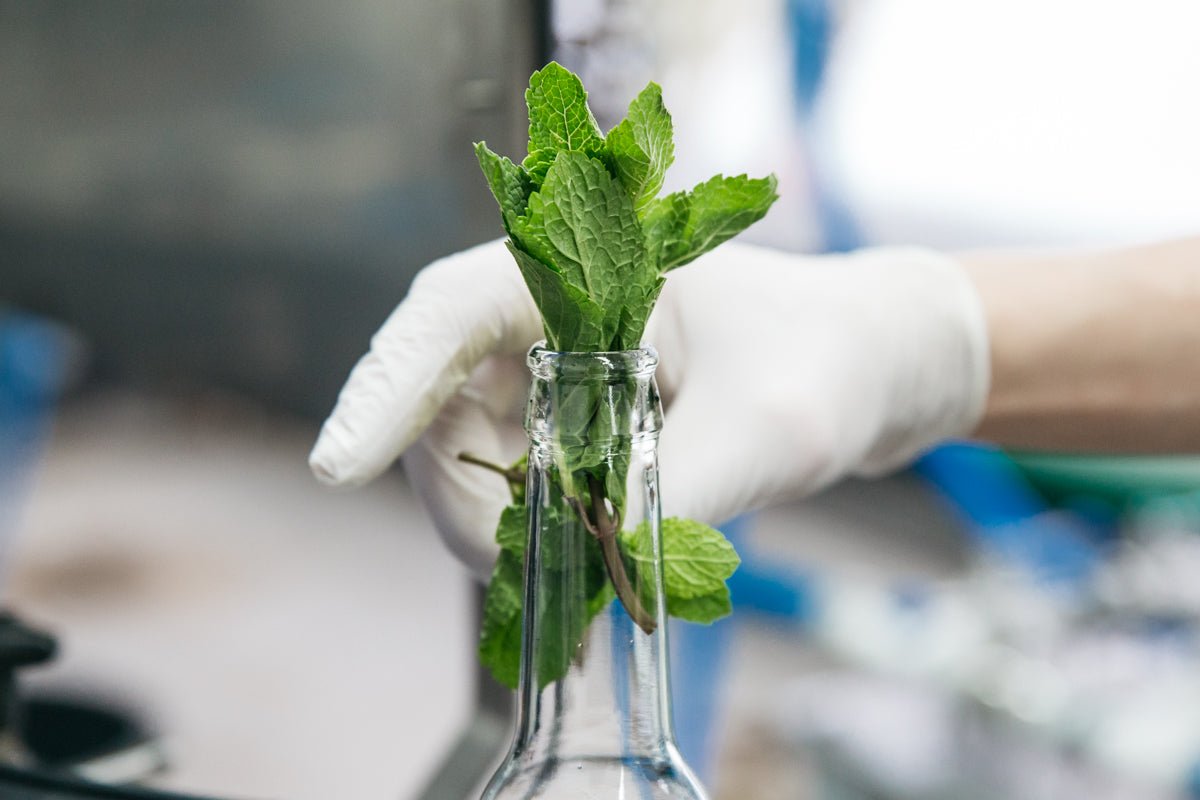How did they get in there? And how did anyone come up with such an idea? What's the point of all this? But let's start at the beginning: One of the two kukki Founder, Josef “Sepp” Klemm Sepp had the idea of experimenting with drinks in bottles with ice from an early age. "Beer isn't really my thing, so I wanted to create a different kind of bottled drink. Cocktails, for example," Sepp explains. In the small workshop on his parents' farm in Bavaria, he first froze the ice in plastic bags, crushed it with a hammer, and then put it into the bottles. Of course, that wasn't the end of it.
Cylindrical ice cubes aka ice sticks
Thanks to his mechanical engineering studies, Sepp was able to build specialized equipment like ice molds himself and conduct initial long-term tests – and the cylindrical ice "cubes" were born. He has, incidentally, applied for a patent for this, because not all ice is created equal. kukki The ice must be pressed very firmly and be of high quality so that when it thaws, the drink becomes liquid and the ice remains ice. And that also answers the question of how the ice gets into the bottle.
But what's the point of all this?
Many other ready-made cocktails have to use artificial preservatives. But not this one. kukki Exactly, because of the ice in the bottle. As soon as the ice sticks, fresh fruit, and cocktail are placed in the bottle, everything is deep-frozen at minus 18 degrees Celsius. This is our natural preservation method, which ensures that... kukkiIt makes it last for at least 12 months. In addition, it is of course simply practical to have a complete Cocktail in a bottle to have - that's how slurping from Sex on the Beach It's also possible on the beach, completely without a bar or crushed ice and all sorts of toppings. Or in the park, on the dance floor, at home, on the boat... simply everywhere.



